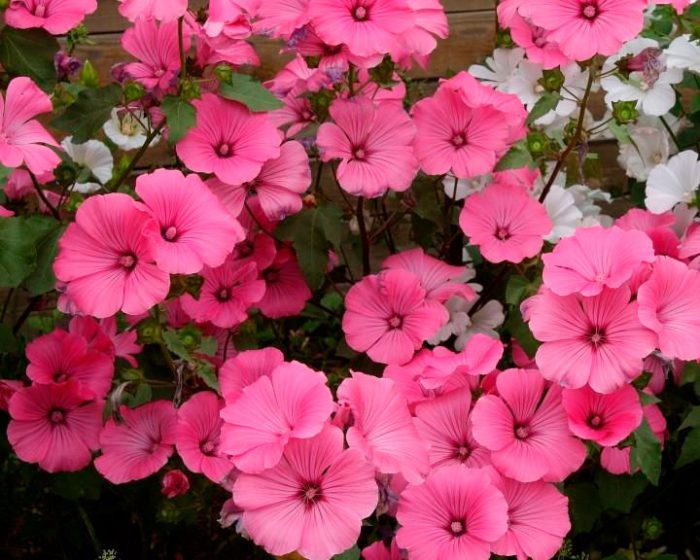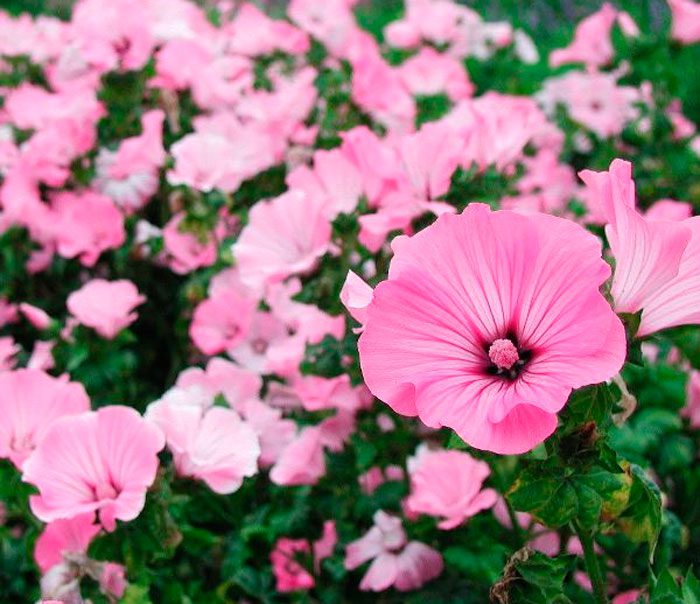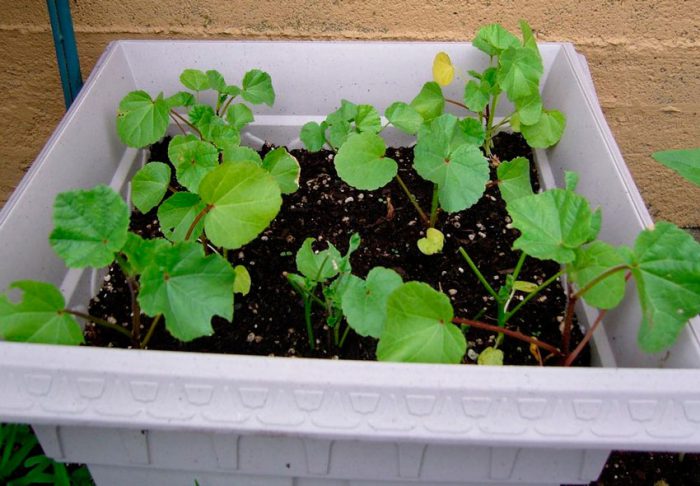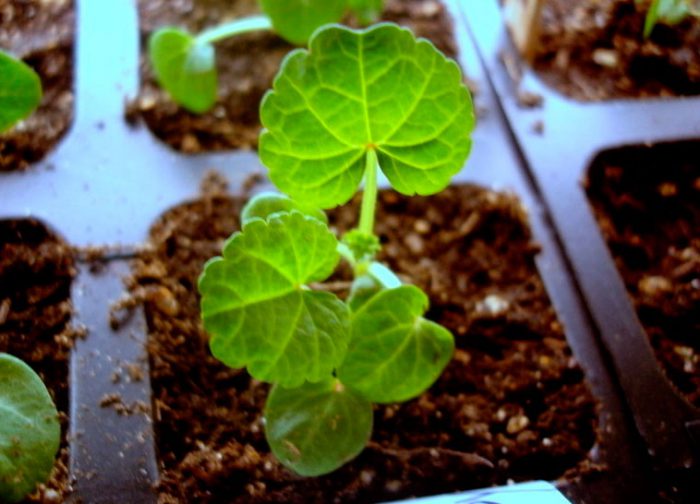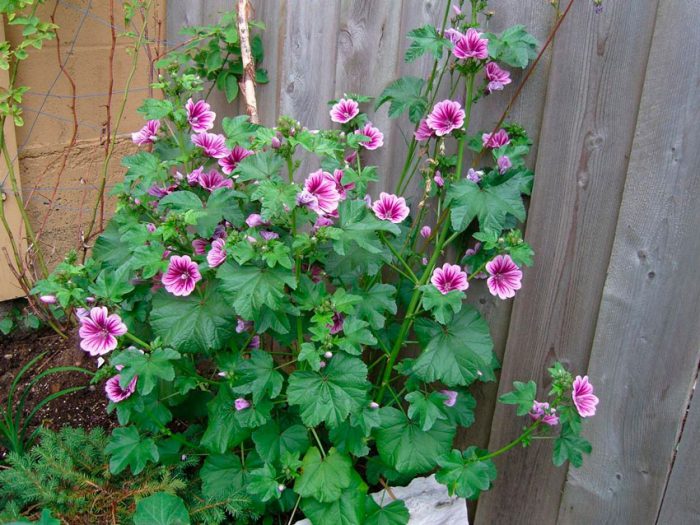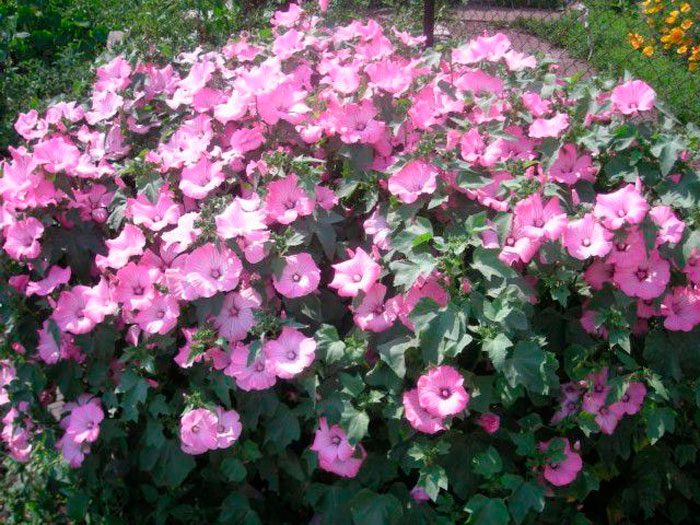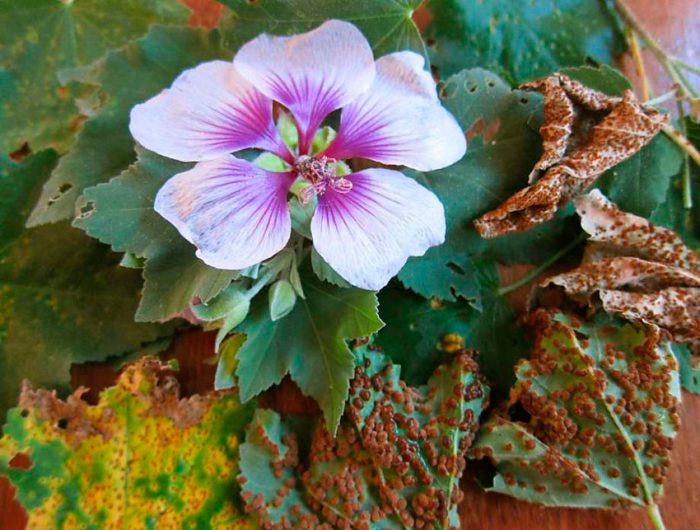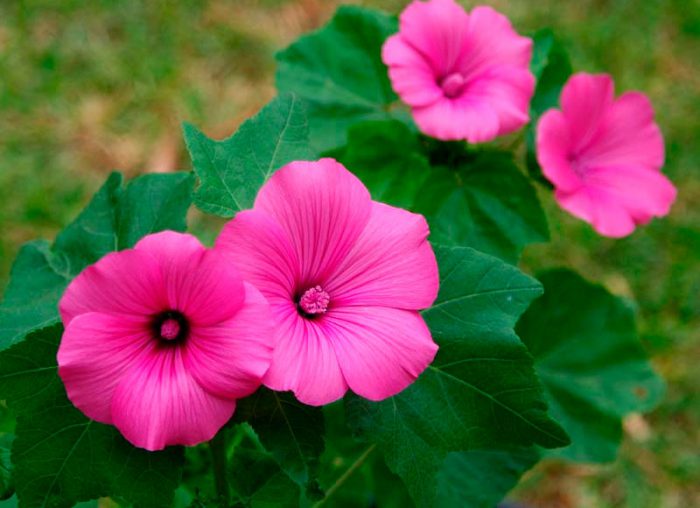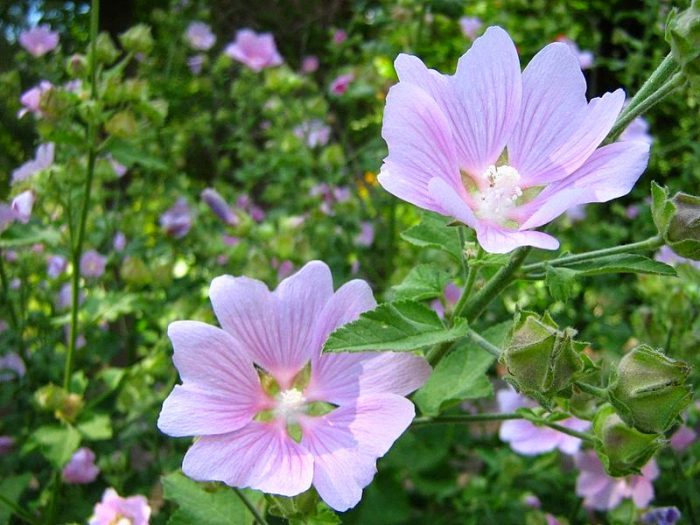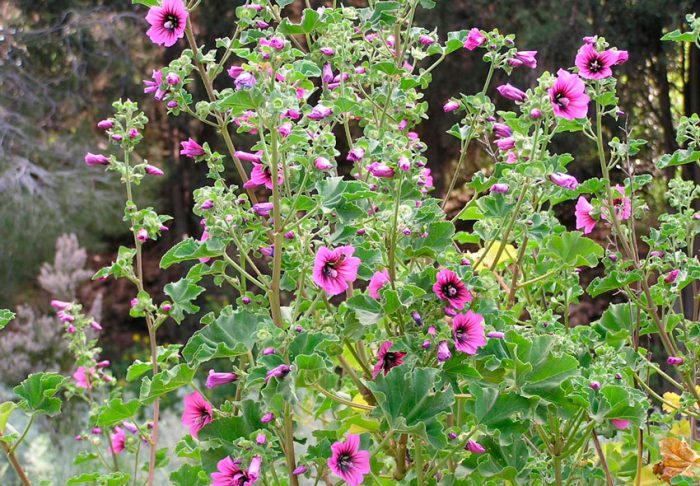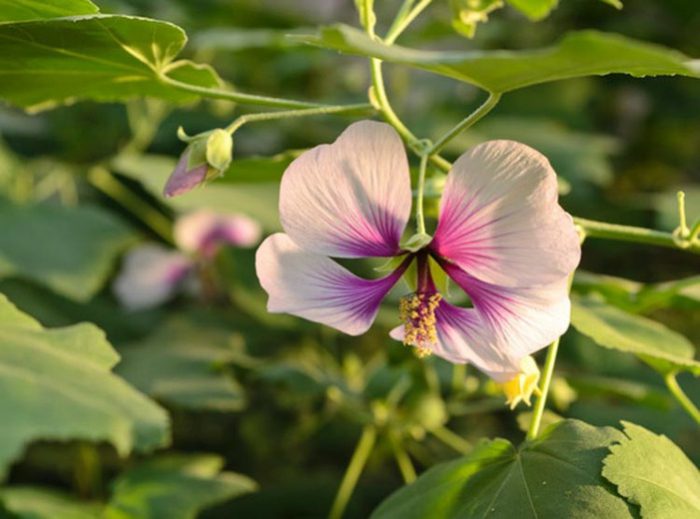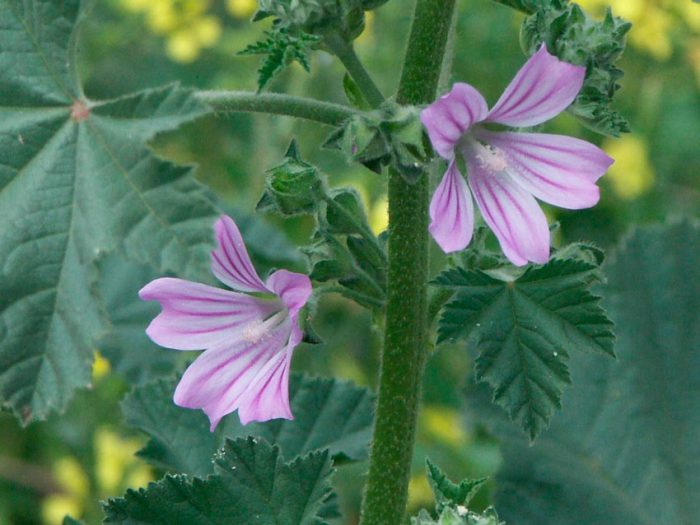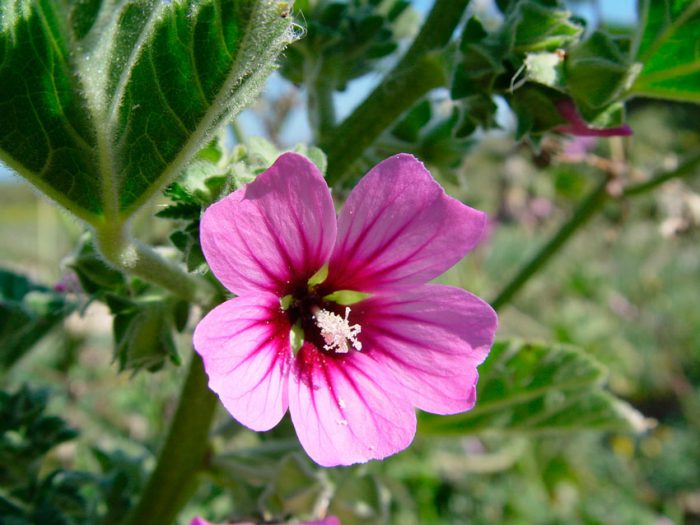The Lavatera plant is also called the wild rose or hautma, it belongs to the mallow family. This genus is represented by shrubs, herbaceous plants and trees. This genus is small, it includes about 25 species. In natural conditions, they are most often found in East Asia, Australia and the Mediterranean. Such a plant was named after the Swiss naturalists and physicians Lavater brothers, who were very famous in the 17th century. Such a plant has been cultivated since the 16th century, but it became popular only a couple of decades ago, in almost all gardens and courtyards at that time you could see these beautiful tall plants. Today Lavatera is as popular as it was at that time.
Content
Lavater features
As a result of many years of painstaking work of breeders, a large number of herbaceous plants, which are annuals and perennials, were born. The height of their bushes can vary from 0.5 to 1.5 m. Plants have a developed root system, powerful branches and a spectacular crown. In most species, alternate leaf plates are lobed, and hairs are on their surface. The diameter of large flowers can reach 10 centimeters, their color is varied, for example: white, purple, yellow, crimson or pink. Flowers grow singly or in several pieces from the axils of the bracts, while they make up the terminal racemose or spike inflorescences. Flowering begins in June and lasts until the second half of the fall. It is believed that Lavatera is an excellent choice for those who never have enough time for anything or for the lazy, and there is some truth in this statement. Such a plant is undemanding to care, unpretentious to growing conditions, resistant to drought and withstands strong gusts of wind. When cut, such flowers look fresh for at least 7 days.
Growing Lavater from seeds
Sowing
In areas with a warm climate, sowing lavaters in open soil is carried out in the last days of April, the first in May. First, a site is prepared, for this, it is brought into the ground by 1 m for digging2 1 bucket of humus or compost and a couple of large spoons of nitrophoska. After that, the soil should be leveled and grooves should be made in it a centimeter deep, which should be shed with lukewarm water. They need to sow dry seeds, which are covered with a soil mixture consisting of humus and garden soil (1: 1). Then the crops must be covered with a film on top, which must be transparent. The first seedlings most often appear after 7 days. After the height of the plants reaches 5 centimeters, the film will need to be removed, the crops should be thinned out, and the soil should be loosened with a little hilling. In the event that fertilizer was not applied to the soil before sowing the lavater, then after the shelter is removed, the seedlings must be fed. For this, it is recommended to use a complex mineral fertilizer.
Seedling
It is recommended to grow lavater through seedlings when there is a desire to bring the flowering time closer. If the planting of seedlings is planned for May, then it is recommended to sow seeds in the first days of March. For sowing, boxes should be prepared, at the bottom of which it is necessary to make a good drainage layer, and they must be filled with purchased soil mixture for seedlings. After the substrate is spilled with lukewarm water and dry seeds are planted to a depth of no more than 10 mm. The containers must be covered with foil or glass. Do not forget to promptly remove condensate from the shelter and water the crops. After about 15 days, you can see the first shoots. They need very good lighting or backlighting, since with a lack of light, the plants become excessively stretched and become thin. After the seedlings grow a little, you will need to remove the shelter. Seedling care is reduced to systematic watering and regular rotation of the box around its axis, this will help the seedlings develop evenly.
Picking
As a rule, picking with a wild rose seedling is not required. After the seedlings have grown up and become more robust, they can be planted immediately in open soil.


Watch this video on YouTube
Planting a lavater in open ground
What time to plant
It is recommended to plant seedlings only after the night frosts have been left behind. If the winters in the region are warm, then disembarkation can be made already in the last days of April. In regions with frosty winters, it is better to postpone this procedure until the last days of May. An area suitable for these flowers should be well lit and have loose, light and well-drained soil. In the event that it is planned to plant a tall variety of lavater, then next to each bush it will be necessary to immediately put a support.
How to plant
When planting a lavater, experts advise using a 20x25 centimeters scheme. This distance between bushes and rows will be optimal for normal growth and development of plants.
Care features
Water the lavater bushes only when necessary. Although these flowers are considered drought tolerant, they still need water. With prolonged drought and heat, watering should be carried out 1 time in 7 days, while for 1 large bush you should take 20-30 liters of water. If the summer is not dry, then watering may be more rare. If the bushes are large and spreading, then they must be tied to the supports in order for them to look more compact. The soil near the bushes must be stopped to loosen after the height of the flowers is about 100 centimeters, the fact is that during this procedure, the root system, which is located superficially, can be severely injured.It is necessary to cut off the flowers that have begun to fade in time, since after the last rain, they become very similar to mucus. And if this mucus gets on the leaf plates, then a burn will remain on them. The first feeding of plants must be done after they have adapted after planting in open soil, for this they use a solution consisting of 1 large spoonful of urea and the same amount of nitrophoska, which are dissolved in a bucket of water. In the event that during the digging of the site you introduced the necessary fertilizers into the soil, then the first feeding of such plants is not needed. The second feeding is done at the beginning of budding, while a bucket of water is taken for 1 large bush, in which one large spoonful of potassium sulfate and sodium sulfate are dissolved.
Diseases and pests
Not only an experienced gardener can plant and grow a lavater, but also a beginner in this business. Also, the gardener will very rarely have to deal with diseases or pests, because this plant is highly resistant to them. When aphids attack the garden, they can also harm the lavater. To destroy these harmful insects, it is necessary to treat the bushes with a combined action (acarin or actellic) or a systemic drug (biotlin, aktara).
If spots of yellow, brown or brown color appear on the seamy surface of the leaves, then this means that this specimen is infected with rust. Trim off all affected parts of the bush, and then spray it with cuproxate, Bordeaux liquid or topaz. If the bush is very strongly affected by such a disease, then it is recommended to dig it up and destroy it.
Lavatera after flowering
Seed collection
When the flowers completely wither, in the place where they grew, you can see the formed green boxes. You should wait until they are fully ripe. Remember that mature seeds are only found in dried-out capsules that are brown. In order to understand whether it's time to collect seeds or not, you need to open one of these boxes. In the event that the seeds in it have a brownish-gray color and easily fall out of the box, then the collection can be started. As a rule, seeds are collected at the beginning of September. Trim the pods carefully and at home sprinkle the seeds out of them on a piece of newspaper. They should be well dried by placing them in a ventilated area. For storage, the seeds are placed in a paper bag or in a linen bag.
Annual wintering
If you grow a one-year-old lavender, then in the autumn time it should be completely cut off and destroyed, while the earth must be dug up. It should be remembered that this plant easily reproduces by self-sowing, in this regard, with the onset of next spring, shoots of lavater may appear on the site.
Perennial wintering
Lavateru perennial for wintering can be left in the soil. Its shoots are bent to the ground surface and fixed in this position. The bushes need to be covered with spruce branches, dried leaves or covering material.
Types and varieties of lavatera with photos and names
3 types of lavater are cultivated by gardeners, namely:
- one-year lavatera, represented by a three-month lavater;
- perennial lavatera, which is represented by the thuringian lavatera;
- the lavatera is two years old, its only representative is the tree lavatera.
Three-month lavatera (Lavatera trimestris)
The height of such an annual plant can be up to 1.2 meters. The shape of the lower leaf plates is round or heart-shaped, their edge is serrated. And the upper leaves can be three- or five-lobed. Single large (about 10 centimeters in diameter) flowers are funnel-shaped and grow from the leaf sinuses. As you approach the top of the bush, the flowers grow denser, and their peduncles become shorter. The five-lobed corolla can be white, carmine or pink in color. In culture since 1620 lush flowering, and it begins in July. Varieties:
- Silver Cap... On the surface of pink flowers with a silvery tint, burgundy veins are clearly visible. The height of the bush is about 0.7 m.
- Mont Blanc... The height of the bush is about 0.6 m, the veins of a dark color are clearly visible on the white flowers.
- Ruby Queen... The height of a bush with strong branchy shoots can reach up to 100 centimeters. The color of the flowers is bright carmine.
- Beautiful girl... On a powerful bush, large shiny inflorescences flaunt, the color of which can be carmine, white or pink.
- Sun goddess... This is a mixture of seeds of tall varieties. The bush can reach 1.1 m in height, it has spectacular leaf plates and flowers up to 6 centimeters in diameter. Flowers can be painted in a variety of colors.
- Novella... The undersized bushes can be as little as 0.2 m in height and are suitable for growing in containers. However, when grown outdoors, these flowers tend to grow slightly taller. The color of the flowers is pink.
- White Sherub... The height of the undersized bush is about 0.35 m, large flowers are white. Can be grown in pots or containers.
Lavatera Thuringia, or Dog Rose (Lavatera thuringiaca)
This strong, branchy plant can reach a height of 200 centimeters. Hard-pubescent greenish-gray leaf plates can be round and heart-shaped. The leaflets are lobed from below, and from above - entire. Single large (diameter about 10 centimeters) pink flowers grow from the leaf sinuses and they have long pedicels. Varieties:
- Lilac Lady... The color of the flowers is lilac.
- I catcher... The color of the flowers is dense pink.
- Burgundy Vine... On the surface of the pink flowers, there are veins of dark purple color.
- Barnsley Baby... The color of the flowers is delicate pinkish-white.
- Bregon Springs... In height, this tall plant can reach 1.3 m. Powerful bushes branch strongly, and they show off a lush three-lobed greenish-gray foliage. Flowering is long and lush. The purple-pink flowers have crimson veins. The variety is drought tolerant and requires light shelter for the winter.
Lavatera arborea (Lavatera arborea)
This biennial plant has a slender, straight stem that reaches 200 centimeters in height. The oval-shaped leaves reach 20 centimeters in length. On the surface of the purple-red flowers, veins of a darker color adorn. Such flowers are outwardly similar to hibiscus, and their spherical fruits have an outward resemblance to cheese heads. Flowering begins in the first days of June and ends in the second half of September. There are variegated forms. Varieties:
- Rosea... Such a plant has very beautiful pink flowers.
- Candy Floss... The color of the flowers is pale pink.
Lavatera seaside (Lavatera maritime, or Lavatera bicolor)
This type of lavater is grown in areas with mild winters. This plant has a second name, which it received due to the fact that its flowers have a two-color color (2 shades of lilac). The height of the bushes can be up to 150 centimeters.
Cretan Lavatera (Lavatera cretica)
In middle latitudes, this type of lavater can also be grown. Such a herbaceous plant can reach a height of 180 centimeters. On the surface of the branched erect stems, there is a felt-pubescence. The length of the same fleecy rounded leaf plates is about 20 centimeters, they are five- or seven-lobed, have a cordate base, the apex is obtuse, along the edge there are small teeth. The diameter of the flowers is about 3.5 centimeters, and their color can be purple or purple. They grow from leaf sinuses and are grouped in groups of 2–8 flowers.
Lavatera mauritanica
This species can be cultivated only in the warmest regions of Russia. The height of the bush can be up to 0.8 m. On the surface of erect branched shoots, there is a felt pubescence. Lobed, rounded leaf plates have a pointed tip.The color of small (diameter about 3 centimeters) purple flowers.
This plant has medicinal properties. Means made on the basis of Lavater are used: for coughs, colds, headaches, intestinal disorders, for aching joints and muscles, gastritis and gynecological diseases. Fresh leaves of Thuringian Lavater are used to heal non-healing wounds, boils and other purulent formations.
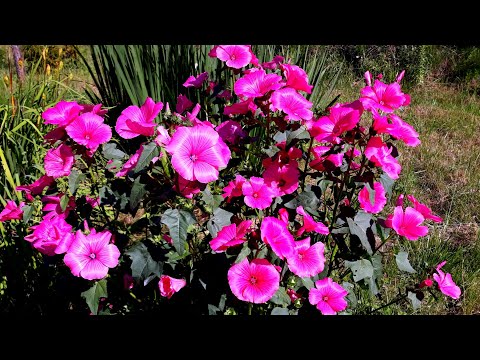

Watch this video on YouTube

